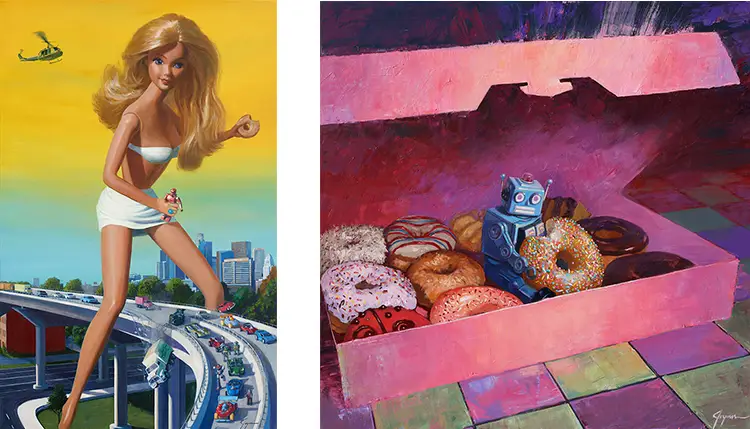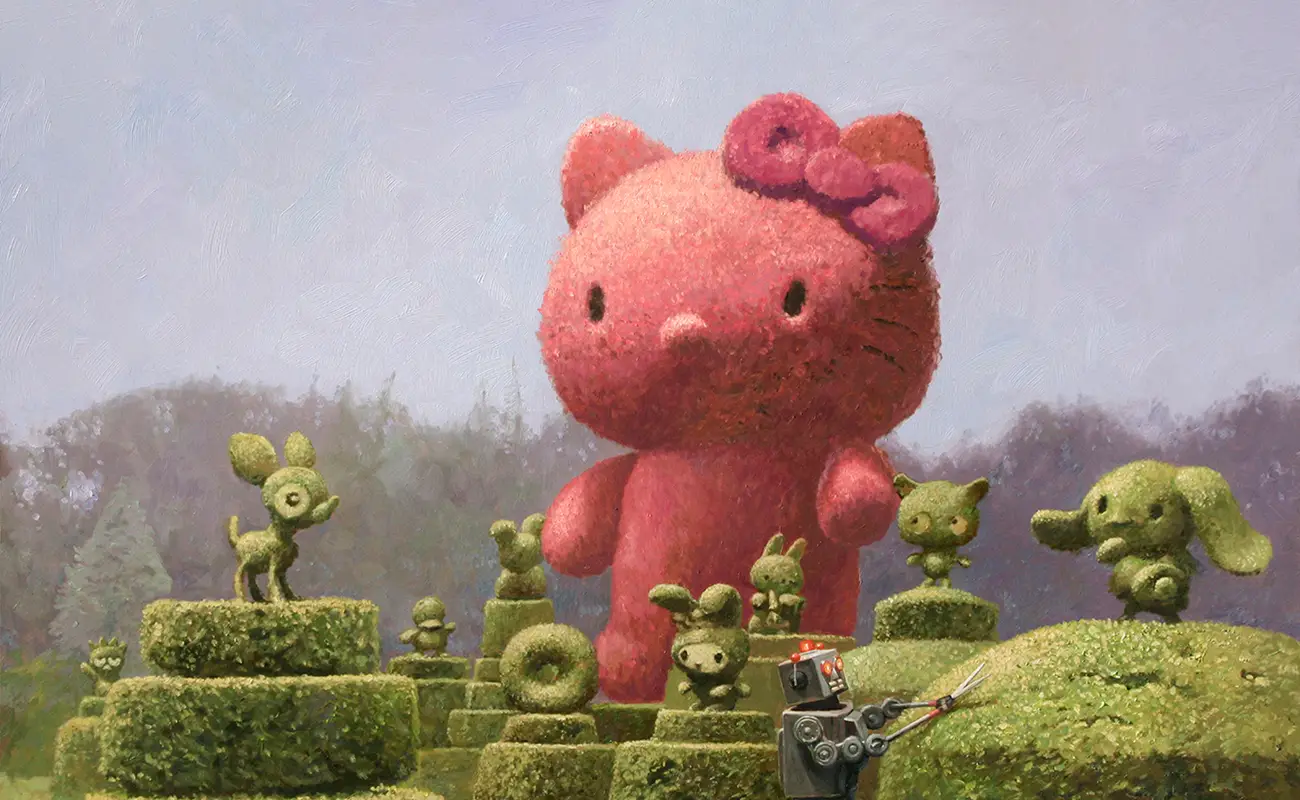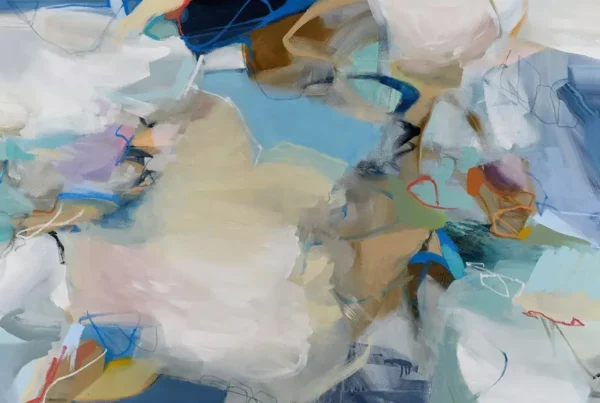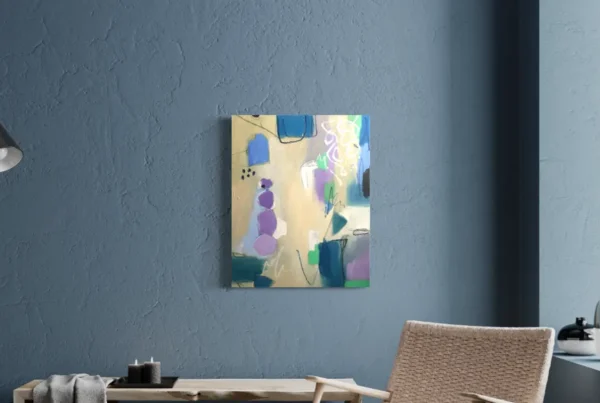“My subject matter has narrowed to Japanese tin toy robots and donuts, for the most part.”
San Mateo to Space: A Journey Painted in Oil
Growing up in San Mateo, California, Eric Joyner developed a love for art under ordinary circumstances that quietly shaped an extraordinary path. His passion for painting and drawing emerged early, supported by the encouragement of those around him. Despite coming from a challenging home environment with limited resources, Joyner committed to his creative inclinations, financing his own education through janitorial work and savings from high school jobs. Attending art college in San Francisco during the 1980s, when such opportunities were more accessible, became a defining moment that redirected the course of his life toward the visual arts. His childhood fascinations ranged from the emotive brushwork of Vincent van Gogh to the fantastical aesthetics of science fiction and the narrative charm of Norman Rockwell, influences that would echo in his work for decades to come.
Rather than arriving at art through a singular spark of inspiration, Joyner discovered his vocation through a process of elimination. School subjects failed to hold his attention, and manual labor jobs—such as moving furniture and working in sawmills—pushed him to pursue something more creatively fulfilling. This pragmatic yet passionate approach to finding purpose helped shape his discipline and work ethic. In many ways, his decision to become an artist wasn’t a romantic leap but a grounded recognition of where his talents and interests truly lay. The allure of painting wasn’t just in the act itself but in the autonomy it offered—an ability to construct his own imaginative universe far removed from the constraints of the real one.
Joyner’s workspace mirrors his dedication to focus and sensory control. He requires a private room free of interruptions, where he can manage the visual, auditory, and olfactory environment. Distractions from phones and computers are actively shut out, reinforcing his need for undisturbed concentration. Mental noise is addressed head-on; he resolves personal or logistical concerns quickly to clear the way for creative thought. This controlled studio environment allows Joyner to sustain his artistic momentum and maintain the clarity needed to manifest his surreal, robot-populated worlds with precision and emotional impact.
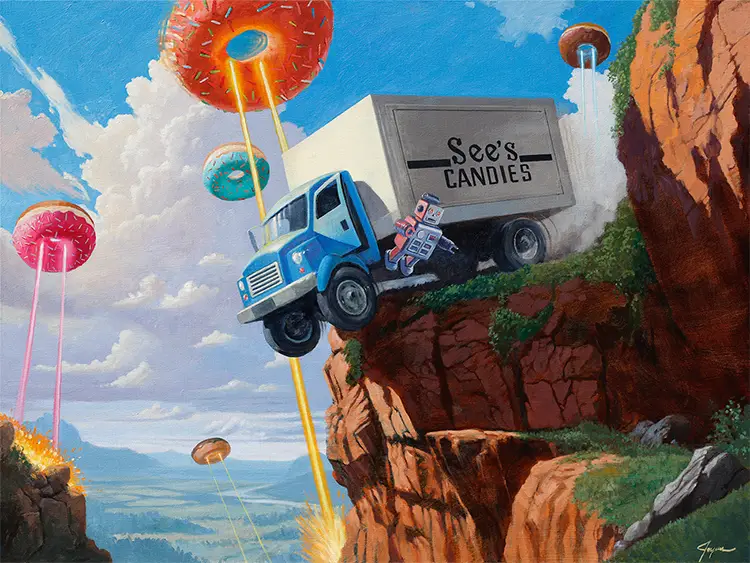
Eric Joyner: Painting the Future with Nostalgia
Eric Joyner’s artistic identity is marked by a distinct blend of realism and whimsical imagination. His medium of choice is oil paint, applied to wood or canvas, which offers him the flexibility and control necessary to bring his unique subjects to life. Over time, his focus has tightened around a recurring motif: Japanese tin toy robots, often juxtaposed with colorful donuts. These objects serve as central characters in his surreal, narrative paintings, bridging a nostalgic past with a speculative future. The deliberate anachronism of these elements challenges viewers to see the ordinary in a new light, while also creating an unmistakable signature style.
Beyond his primary motifs, Joyner explores a broad range of visual themes, borrowing elements from film noir, science fiction, and kaiju cinema. His compositions are populated with motorcycles, ravens, cats, bakeries, theaters, monsters, and mountains—each object contributing to a broader narrative arc within the frame. These paintings frequently flirt with the absurd but remain grounded through his meticulous realism and sense of story. The combination of pop surrealism and classical oil techniques allows Joyner’s work to appeal to both fine art audiences and fans of popular culture. Every painting invites interpretation, as his familiar-yet-fantastic imagery opens multiple layers of meaning.
The transition to oil paints marked a significant turning point in Joyner’s career. Though he initially worked with watercolor and acrylic, he found oil to be the most intuitive and effective medium for his creative needs. This shift coincided with his move into the gallery scene, where the richness and depth of oil painting aligned with the expectations of fine art collectors. The tactile quality and slower drying time of oil allowed Joyner to explore nuances in shading and form that enhanced the realism of his subjects, making his robot and donut compositions all the more striking and immersive.
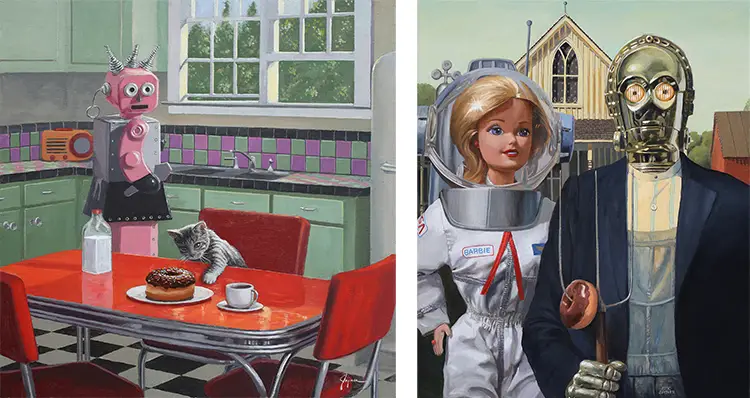
The Punch That Launched a Thousand Paintings
Among Eric Joyner’s many works, one painting in particular stands out not only for its artistic merit but also for the pivotal role it played in his career. Titled The Final Blow, the piece marked a breakthrough moment in 2003 when it was selected for the cover of Spectrum 11: The Best in Contemporary Fantastic Art, a prestigious annual publication. The painting was inspired by George Bellows’ iconic boxing scene Dempsey and Firpo, and Joyner’s version reimagines the energy of that fight through his signature robot characters. By combining historical art references with his distinctive surrealism, the piece exemplifies his ability to bridge genres and timelines with wit and technical skill.
The Final Blow didn’t just earn critical acclaim; it found its way into mainstream pop culture as part of the set design for the hit television show The Big Bang Theory. This placement introduced Joyner’s work to a global audience and solidified the cultural resonance of his artistic voice. The painting’s presence on a show known for celebrating geek culture created a natural synergy with Joyner’s recurring themes of sci-fi nostalgia and mechanical whimsy. Its selection affirmed the painting’s accessibility and appeal beyond traditional art circles, proving that fine art could coexist with entertainment without losing its integrity.
This moment catalyzed broader recognition and opportunities, enabling Joyner to expand his audience and establish a firm presence in both gallery spaces and popular media. The painting’s success underscored how a single work, when imbued with originality and resonance, can transcend its medium and open doors that might otherwise remain closed. For Joyner, The Final Blow was more than a painting—it was a launchpad that confirmed the potential of his unique artistic vision.
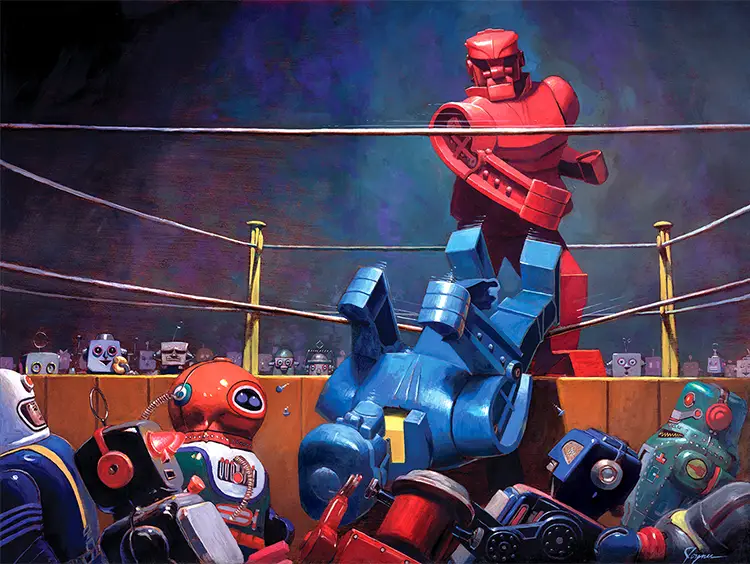
Eric Joyner: Building Visual Worlds from Memory and Machines
Eric Joyner’s creative process is deeply shaped by the artists who influenced him throughout his life. From the emotive expressiveness of Vincent van Gogh to the narrative clarity of Norman Rockwell and the dramatic realism of Edward Hopper, Joyner draws from a broad spectrum of visual traditions. Other key figures such as N.C. Wyeth, Frank Frazetta, Kazuhiko Sano, and Francis Livingston have contributed to the development of his stylistic approach. This rich lineage informs not just his technique but also his storytelling—each influence contributing a layer of aesthetic or thematic complexity to his work.
His appreciation for science fiction illustrators like Jeffrey Jones and Jon Berkey is reflected in the way he renders futuristic scenarios with painterly elegance. The whimsical yet weighty tone in his compositions owes much to illustrators such as Maxfield Parrish and Franklin Booth, while the pop sensibility of Wayne Thiebaud can be traced in Joyner’s frequent use of donuts and other accessible visual symbols. These diverse artistic role models serve as a creative engine, guiding Joyner’s decisions without confining his imagination. By studying these masters, he’s found a language all his own—speaking through paint, but echoing centuries of visual storytelling.
Currently, Joyner is between conceptual projects, awaiting the next spark of inspiration to fuel his next big idea. He acknowledges the value of setting creative goals and recognizes the importance of having a vision to pursue. Though he doesn’t have a specific project in development, his openness to possibility suggests that something new is always on the horizon. His artistic evolution has never followed a predictable path, and it’s this unpredictability—balanced by discipline and craft—that keeps his work vibrant and his audience intrigued.
